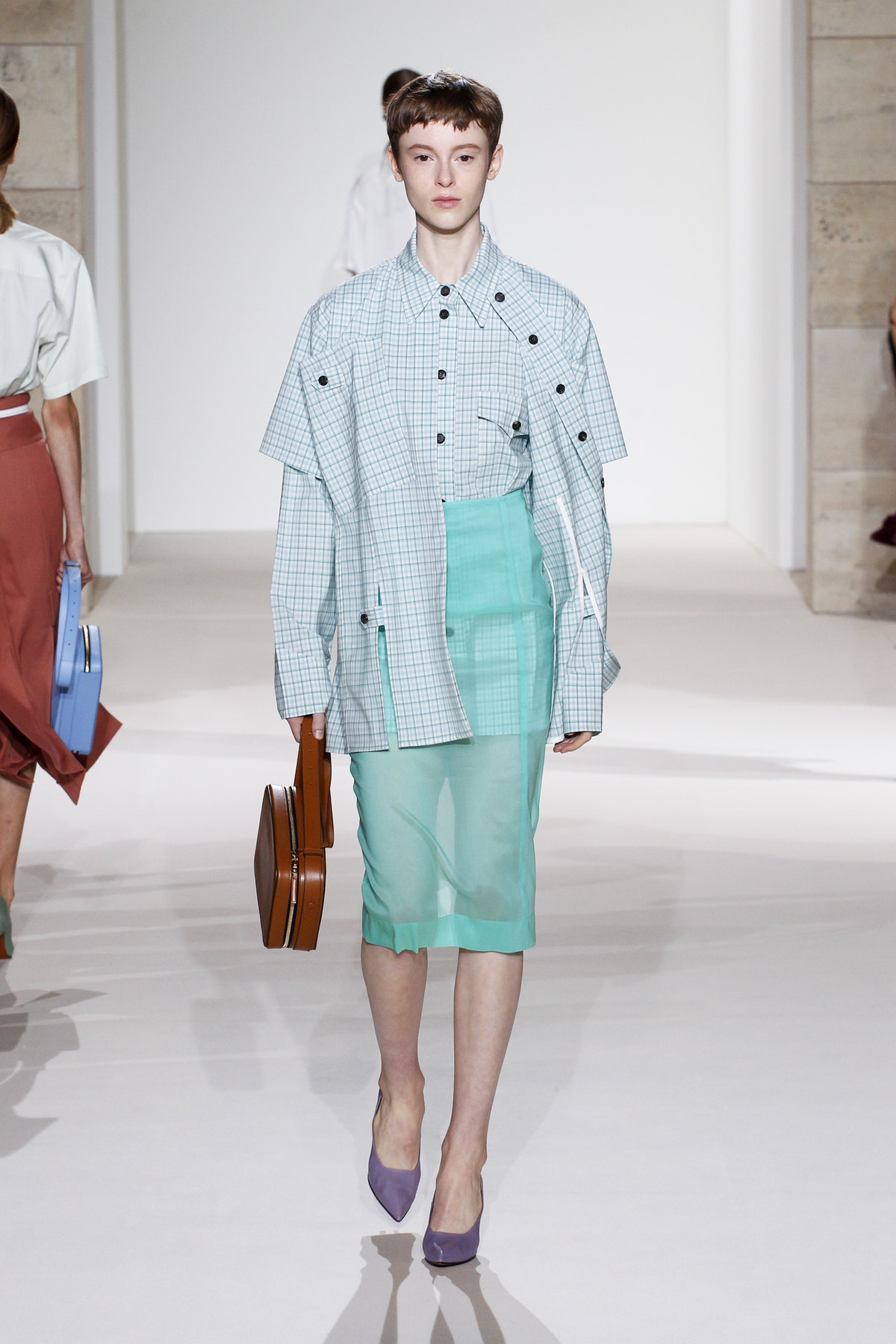This season’s New York runways showed a need for Spic & Span products to spring-clean the current confused social and political climate. It seemed as if colors and textiles escaped from the dishwasher and jumped straight onto the runway with products just formulated for function.
The major piece in most collections – the shirt – was translated in fresh fabrics and rubber-coated qualities, and mixed with heavier lacquered and nylon canvas to guard from spills. The gaudy plastics of the kitchen cabinet with loud labels and proud phrases were seen in the streetwise collections of young brands and an established designer like Jeremy Scott, his fun SpongeBob SquarePants aesthetic often attenuated with camouflage patterns and sparkling scourers metals. The plastic colors of brush and dustpan gave plain clothes in shows a soft acidic makeover inspired by last season’s Sies Marjan’s sorbet hues, and created a major American message: it will be the cleanest spring in decades.
Toweling and jerseys slithered over the female frame like a second, serpent-like skin, and were dusted with layers of transparencies. The crisp cottons that define the shirting trend were crafted in high-twisted qualities to give the material a resilient tactility. At times, the cotton fabrics seemed to be blended with some linen for a more rustic hand. Kitchen towels and cloths were explored in several clean collections as color woven stripes and simple checks, bringing back a feel of mix-and-match no longer explored since the 1960s. The best such examples were seen at Rosie Assoulin. Foulard patterns and kerchief shapes led to elegant simple clothes at Diane von Furstenberg, almost like a fresh Hermes which could allow the house to become a luxury brand with foulard extension and fantasy accessories.
Patterns recalled the fluid heydays of Pucci and all sorts of Latin American excessive blooms, plucked from the desert (just before the wall goes up), with headdresses and turbans giving a Southern allure to the crisp fashions at Marc Jacobs, Carolina Herrera, Prabal Gurung and Delpozo.
Basic shapes that seemed cut from Simplicity Patterns dominated the design discourse in shows such as Victoria Beckham and Tory Burch. They exercised restraint and followed the body at a modest distance while gracefully rethinking how the preppy look once defined Americana. In other words, prepping up fashion against the dark times we live in.
In a need for solidity and harmony, colors were used monochromatically, allowing the fabrics to dominate the design with a gamut of expressions, from the dullest poplin to the most shimmering of satins. The satin weave with its reflective surface was on every designer’s mind, used in all-encompassing outfits and all-in-one garage suits. Parachute silks and organdy throws barely covered these the monochrome outfits. The early 90s of Helmut Lang (the designer) and Zoran (the outsider) came to mind, albeit less minimalistic.
In several collections, the idea of worker clothes was introduced with lab coats, garage overalls, labor jackets, dungarees and carpenter’s pants, again alluding to cleaning, washing, repairing and mending current affairs as a labor of love.
Car Wash would be the appropriate soundtrack for this new season, as waving pom-poms and abundant fringes underlined a need to dance away all worries.
Editor’s Note: Lidewij Edelkoort is one of the world’s most famous trend forecasters and the force behind her Paris-based company Trend Union.



